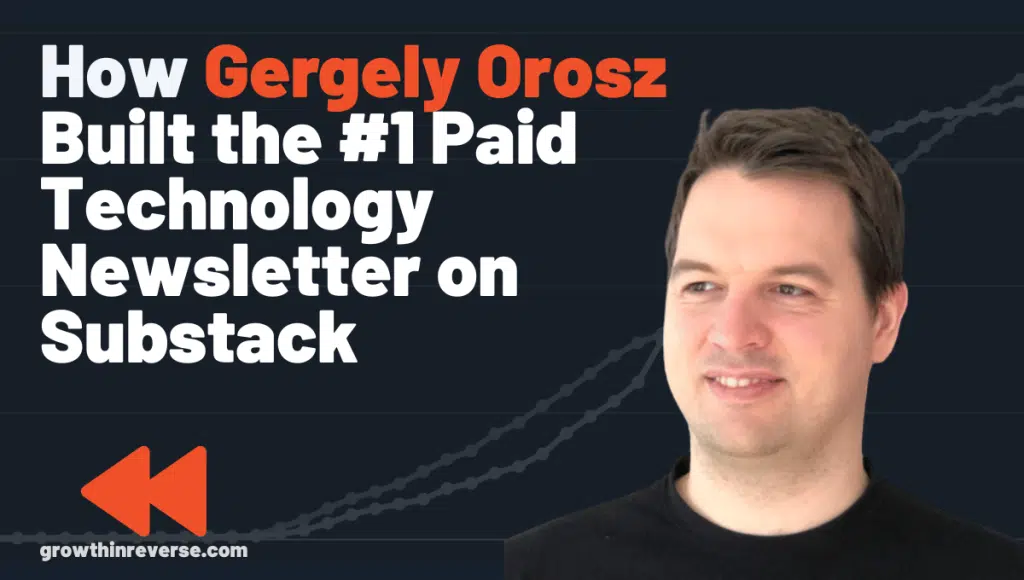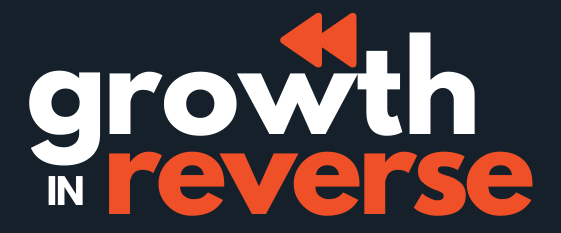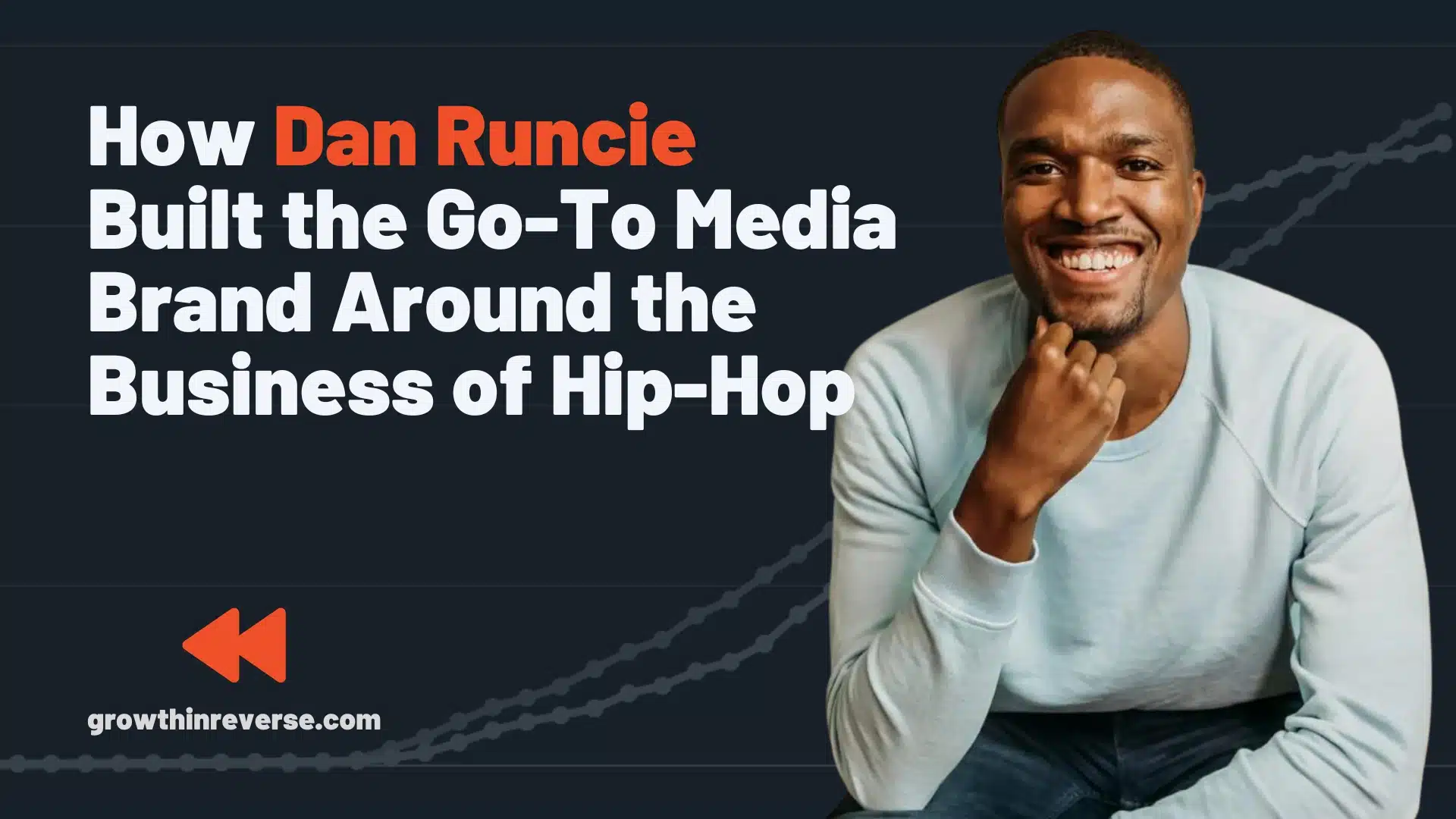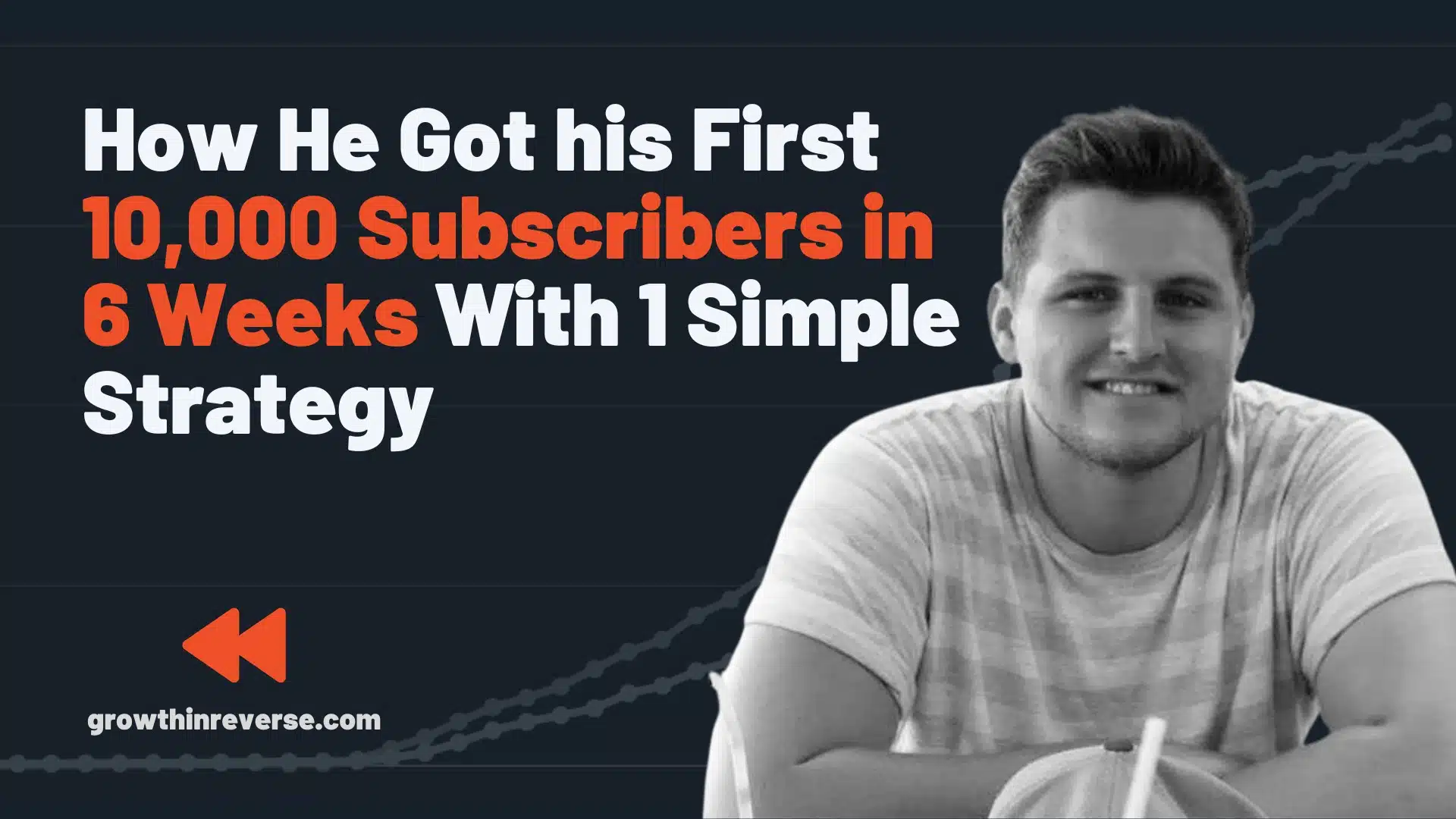Gergely Orosz writes the Pragmatic Engineer newsletter, which is now the #1 technology newsletter on Substack.
He now has over 400k email subscribers and brings in over $1.5 million per year from his newsletter business.
And he doesn’t have any newsletter sponsors, affiliates, or courses.

How Gergely Makes Money
Gergely runs his business quite differently from a lot of newsletter operators. He doesn’t work with sponsors at all.
Instead, he relies mostly on premium subscribers to his newsletter.
Paid Subscriptions
Gergely uses Substack, which makes it pretty easy to offer a paid subscription to any newsletter.
He charges $150 per year, or $15 per month.

If you recall from my deep dive on Lenny’s Newsletter, I estimated he was converting around 4% of free subscribers into paying subscribers.
I think Gergely has a similar conversion but I couldn’t find any hard data around that number.
Here are some breakdowns and scenarios to give you a better estimate of the income he earns from this.
The number on the left is a conversion rate, and the number on the right is the estimated annual revenue if we conservatively say that everyone is paying the $150 per year.
- 1% = $619,500
- 2% = $1,239,000
- 3% = $1,858,500
- 4% = $2,478,000
I’m going to guess he makes around $1,500,000 in subscriptions before fees.
That’s one hell of a newsletter. But we’re not done.
Books
Gergely has written a few books as well. He did this before he really started the newsletter as it stands today, but they sold really well.
To the tune of $100k in one year. I’ll get more into that in a bit.
And, there’s one critical mistake I think he made that I’ll share below.
Job Board
Gergely uses a tool called Pallet to put together a job board.

The job market is a little weird right now so I don’t want to speculate on numbers.
There are 17 jobs currently listed on the job board from 10 different companies.
YouTube Adsense
Gergely posted on YouTube for a little while, and built his channel up to around 57,000 subscribers.
He hasn’t posted on there since May of 2022, so I’m pretty sure this isn’t a big income source anymore, but I wanted to include it anyway.
The Growth Timeline
Gergely has been writing online since 2015, but didn’t start collecting email addresses until 2019.
And he didn’t even start his Substack account until August 25, 2021.
Before the newsletter, his posts were pretty sporadic (a few a year) and he wasn’t actively building an audience like he is today.

The Growth Levers
Here are the growth levers I found that helped Gergely grow his audience really fast.
⛲️ 1. Remove the pressure. Whether it was intentional or not, he’s been removing any financial pressure from his projects allowing him to just create the content he wants to see in the world.
📚 2. The $100k books. Gergely implemented three really smart ways to market and sell more books that ended up generating over $100,000.
🕵🏻♂️ 3. Product Hunt & Hacker News. In the early days of his newsletter, there were two platforms that really helped jumpstart his growth.
🍨 4. The Scoop. Gergely started sharing exclusive tips he was getting from people who worked at large tech companies, and it’s led to some really interesting media coverage.
📣 5. Recommendations. Sharing other newsletters and getting recommended in return has led to massive growth for Gergely and his content
1. Remove the Pressure ⛲️
Many people start a new project and try to force it to create money from day one.
Gergely has been able to remove that pressure from seemingly all projects he’s done, whether it’s been on purpose or not.
No Pressure Writing
Gergely had been writing online for years but was never focused on one topic, and he wasn’t writing consistently.
When he started working at Skyscanner in 2015, he read a post written by Jeff Atwood, the founder of Stack Exchange.
One quote stuck with him after reading it:
Jeff wrote that post in October of 2007 when blogging was a popular term, but you can replace “blogging” with “writing” or any content creation and I’d say it still rings true.
After reading that in 2015, Gergely committed to writing once a month for 6 months.
When he started that challenge, he wrote all of those posts for himself, knowing no one was reading them.
That removed the pressure to create “viral” content and he could just write what he was interested in.
He was able to finish those 6 months of writing, but he ended up taking a long break from writing between 2015 and 2019.
Having a Financial Runway
Before leaving his job at Uber, Gergely had saved up a decent amount of money, giving him a comfortable “runway” to figure out the financial side of things.
This allowed him to write the book he wanted to without worrying about running out of money or having to rush through getting it done.
And that wasn’t the only way he removed the pressure of selling books.
No Pressure Book Sales
Once he left his job, Gergely ended up self-publishing 2 books.
Self-publishing inherently adds quite a bit of stress because you’re spending a lot of time writing and still have to find ways to sell the book yourself.
But he was able to remove the pressure of making a ton of sales by doing something I haven’t seen done very often: he got book sponsors.
Yep, he went out and found companies that would sponsor the book so he didn’t have to worry about making sales.
The best part is that he was even able to give away the PDF version of the first book for around 60 days because the sponsors covered the costs.
After that initial period, he began charging for the PDF again.
Removing the Pressure of a Paid Newsletter
He was also able to get rid of the pressure again when he started the paid newsletter.
When he began, he committed to writing that paid newsletter for 6 months. If he didn’t like writing it, or the pressure to create something every week was too much, then he told himself he would refund everyone their money.
Of course, he didn’t tell the readers that, but that was the plan.
Now, we know that within the first 6 months of running the paid newsletter, he grew it to more than 30k subscribers, with more than 1,000 paid subscribers. That came out to around $150k in annual recurring revenue (ARR), without taking into account the book sales.
I guess you could say by that point he knew it was a success and the pressure was off.
2. $100k Books
In 2020, Gergely left his multi-six-figure salary job at Uber. He knew the pandemic was going to really change the company, including tons of layoffs of his team, so he decided to take a risk and go out on his own.
After first, he planned to leave Uber to build a startup and raise venture capital.
But before he did that, he wanted to finish a book he’d been thinking about writing, called The Software Engineer’s Guidebook, around helping people grow their career in that field.
He got a little sidetracked while writing that book and ended up writing a book called Building Mobile Apps at Scale first.
This mobile apps book and a tech resume book made around $100k in the first year of sales.
Note: There is one major mistake that I think Gergely made at this point. These e-books sold over 30,000 copies in just a few months, but I don’t think he was capturing the emails of all of these people. He had to email them a receipt or at least the link to the book, so that seems like a big missed opportunity to not add them to his newsletter.
Unique Marketing & Content Creation
Now that we know we need to be collecting people’s emails with this, there are some really cool things he did with these launches that I don’t want to go overlooked.
Book Sponsors
I mentioned this above but wanted to double-click on it here.
Gergely went out and got 8 companies to sponsor this book, helping to get it into more hands and again, reduce the pressure of selling.

Pricing Tiers
Gergely also used pricing tiers to drive a high average sale price with each conversion. By offering bonuses with the higher tier, he can give people more value and help bring in some more revenue at the same time.

If you’re familiar with Nathan Barry of ConvertKit and the launch he did with his book “Authority”, you’ll know this strategy well.
Nathan was able to command an average conversion value of around $50, even though the basic book package was only $39.
Collaborations
Gergely had 36 other people helping him with the Mobile Apps at Scale book.

I’m not sure if he compensated them for their help, but either way, this is a great strategy.
The really interesting part of this is that at least a few of those people shared the book with their audience. I found some tweets like this one and this one where they definitely did.
Not only is the information inside the book more valuable by having multiple different takes and inputs from different teams, but those people were excited enough to share the book with their audiences too.
3. Product Hunt & Hacker News
Gergely launched his Substack newsletter in August of 2021.
In the first 6 weeks of launching, the Pragmatic Engineer newsletter saw growth from 2 big sources.
About a month after starting the newsletter, one post of his got shared on Hacker News and ended up getting a ton of engagement:

Around the same time, Gergely launched the newsletter on Product Hunt and got the 2nd Product of the Day badge.
Judging by some screenshots of newsletter growth that he’s shared since this period was BIG in terms of driving subscribers.

The Product Hunt launch didn’t send a huge number of people, but it looks like the combination of these two events improved his growth trajectory quite a bit.
Hacker News Spikes
Since his blog and content are centered around technology and engineering topics, Hacker News has been a great place for him to repost his content.
Other people often submit it before he does, which shows just how useful people find his content.
Here are some of his most popular submissions:
Here are some of the learnings he’s shared if you’re interested in trying out this method for yourself:
4. The Scoop 🍨
On December 10, 2021, Gergely officially launched “The Scoop”, which was an additional post for paying subscribers where he shared “scoops” or news stories not covered in the tech landscape.
He gets a ton of tips and “insider” information from people who work at some well-known tech companies. He started curating those and releasing deep dives featuring those insights, most of which haven’t been covered by the major media outlets yet.
The way that The Scoop series got started is pretty interesting.
Back in September of 2021, the hiring landscape in the tech space was getting a little crazy. A reporter from Wired magazine had reached out to see if Gergely had insider scoop or insights into the situation.
Gergely was excited to share what he knew. So he spent some time writing pages of notes for the reporter, but by the time he emailed him back, the article had already gone live.
Not surprisingly, it was missing a lot of the insights he had sent to the reporter.
So Gergely took those pages of notes that he had sent over, and turned them into his own article titled “The perfect storm causing an insane tech hiring market.”
Here’s what he wrote about that situation:
He never set out to write “exclusive” stories about the space, but he increasingly gets more and more tips from people working at tech companies.
He keeps all of the tips he receives anonymous to build a sense of trust with those who do send him information.
The almost starts a mini-flywheel of increasing how many tips he receives.

- If someone knows he won’t “out” them, they feel safe sending in information.
- This allows him to create content and share information you probably won’t find anywhere else.
- The better the information, the more it gets shared/
- The more it gets shared, the more readers he gets, and ultimately, the more “tips” he receives.
It’s a nice self-perpetuating cycle he’s been able to build out.
He doesn’t just say that he will keep the tips anonymous. Gergely set up multiple ways for people to send in their tips, including self-destructing messages:

Extra Backlinks
The other cool thing about The Scoop is that these stories are really relevant and timely.
They ended up getting shared quite a bit and linked to from major news sites because of it, including:
Getting backlinks from high-profile websites like this can really help boost your search engine rankings, and thus, send you more subscribers.
Oh hey, it’s another flywheel! 🙂
5. Recommendations & Discover
In April 2022, Substack launched its “recommendations” feature, allowing newsletter creators to recommend other newsletters.
This has had a huge impact on the growth of newsletters on the platform.
The feature has increased the growth rate for Pragmatic Engineer, and I’ve shared this in a few previous deep dives on Lenny’s Newsletter and ByteByteGo.
Gergely mentions this as the number 1 growth lever for his free subscriber base.
But I found something interesting in doing deeper research:
While recommendations drive the most subscribers overall, they rank 3rd in the channels that drive the most paid subscribers for his newsletter.
Inherently, this makes sense because they are just signing up before they’ve probably read any of your content. The quality of these people is likely to be lower because of this.
But it still struck me as surprising. And definitely something to keep in mind if you’re building a paid newsletter.
The Substack Leaderboard
A side benefit of building one of the top publications on Substack is getting added to the leaderboard.
Because he’s grown to become the #1 technology newsletter on Substack, that spot perpetuates more growth.
Anyone who finds the Substack leaderboard or goes to the Discover page is going to see him when they click on the “Tech” category.
If you’re at all interested in tech or startups, you’re probably going to check it out and give it a read.
Gergely is currently at #1 for paid newsletters, and #2 overall, behind a previous deep dive, ByteByteGo.
How You Can Replicate Gergely’s Success
While he seemed to get started at the right time to advantage of the early days of Substack recommendations, there are a number of ways you can replicate some of The Pragmatic Engineer’s success.
1. Remove the Pressure
Sometimes, a little pressure is good to help you get a project going. But oftentimes, too much of it can really dampen the quality of your work.
Especially if we’re talking about financial pressure.
Can you remove the pressure from certain aspects of your work?
Instead of selling one-off sponsors for your newsletter, can you go in search of a long-term sponsor instead?
While it might seem like everyone is saying you should leave your day job and go full-time on your business, oftentimes removing the pressure of having to make something support you financially can really help you thrive.
2. Use Recommendations
Substack, Beehiiv, and ConvertKit all have built-in recommendations platforms.
And they can really help grow your audience much faster.

This is one of those things that might not work great forever, so I’d recommend you start using it while you can.
You can work together with other creators you enjoy and grow your audiences at the same time.
3. Create Your Own “Scoop”
Every industry has news that isn’t being covered by the mainstream media. While not every niche wants “news”, there are plenty that do.
And that leaves an opportunity for us to be the news source for that specific niche.
Gergely cites a quote from Eric Newcomer in one of his posts:

I love this exchange because it’s so true.
Here is Gergely, a seemingly normal tech guy that most people would ignore.
Yet he’s been able to garner the attention of hundreds of thousands of people and pull in around $1.5 million in subscription revenue with his “niche” topic.
Don’t forget this when you’re writing for your own audience. Most good newsletters today are born out of a desire to help a specific niche learn, grow, or be entertained.
And just because a media outlet says the audience is way too small, doesn’t mean that you can’t come in and build a wildly successful business helping those people.











